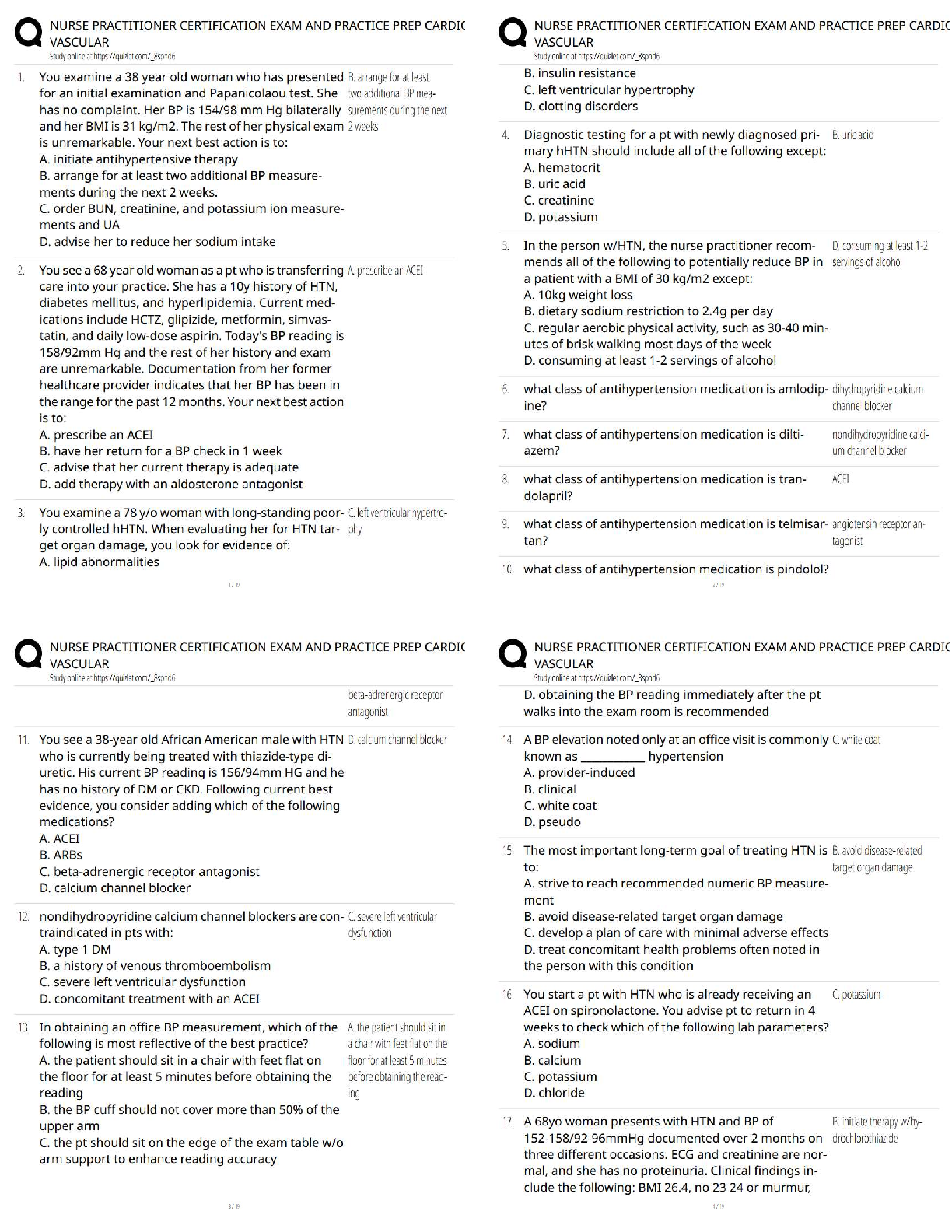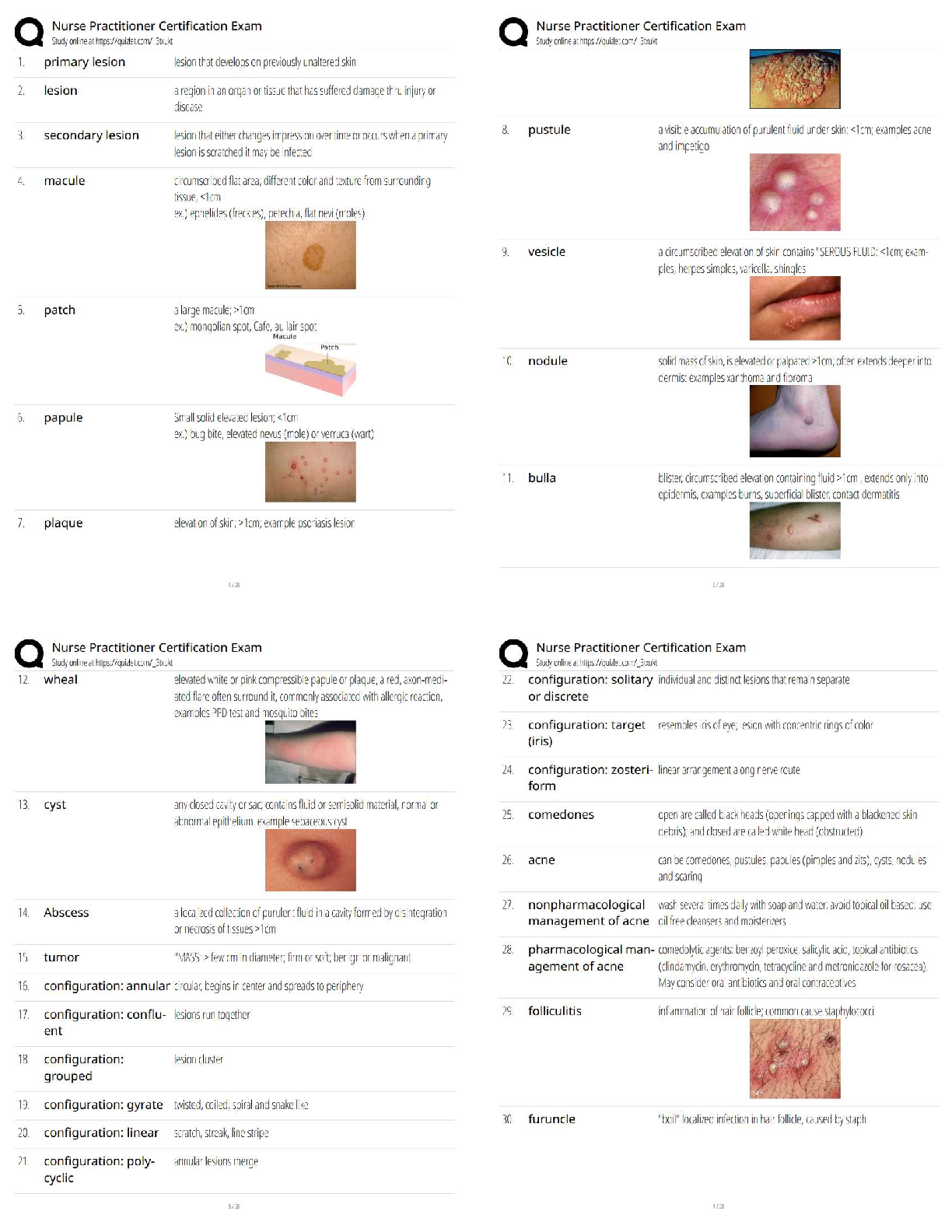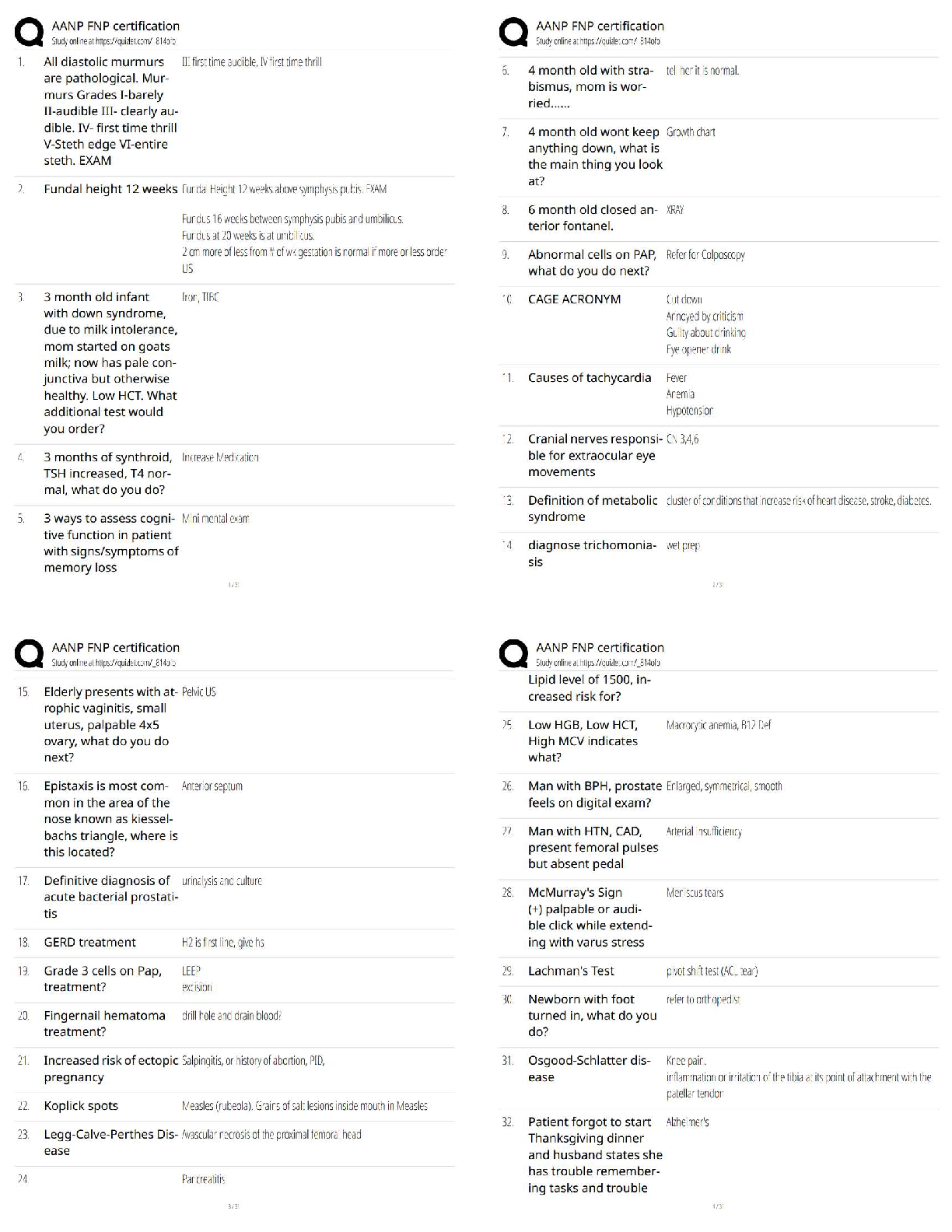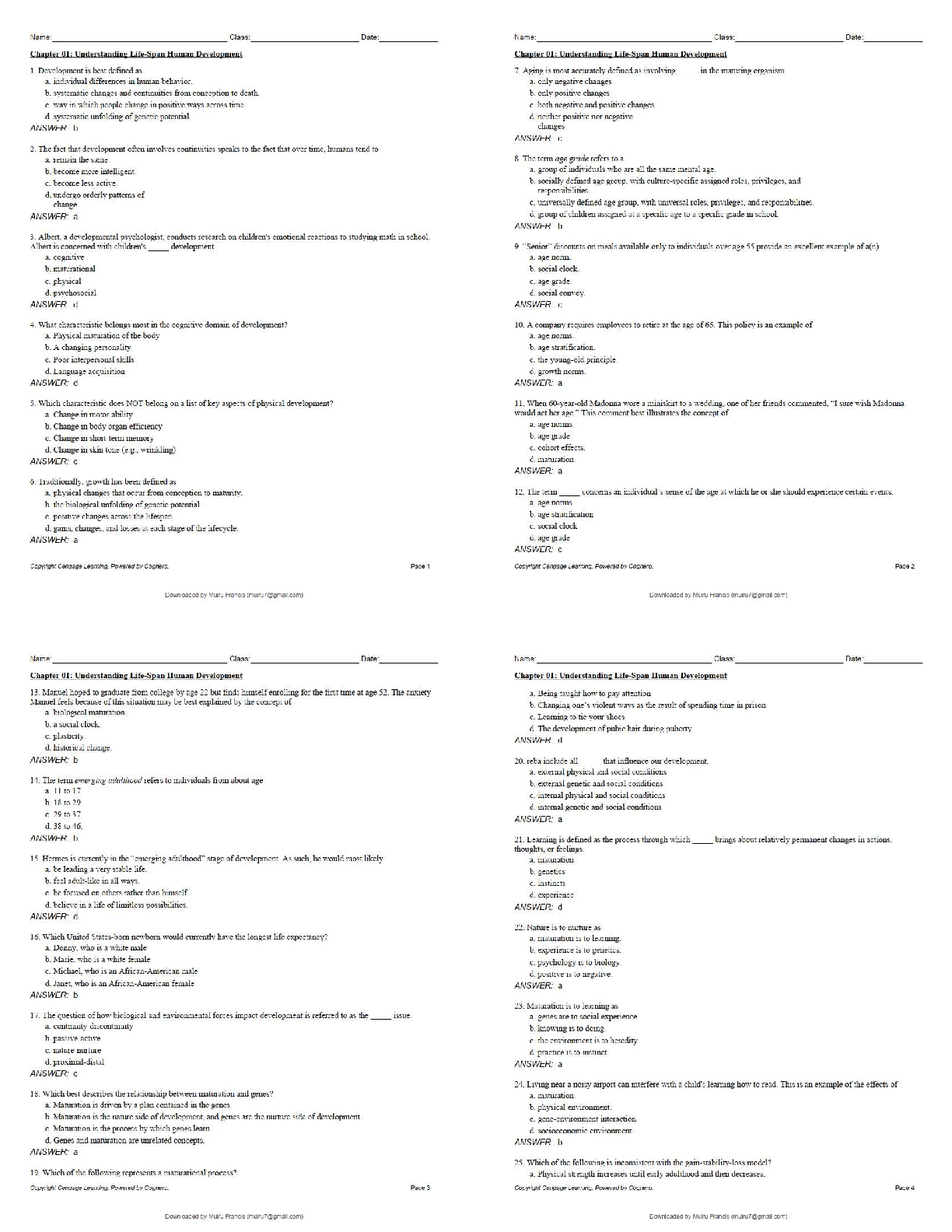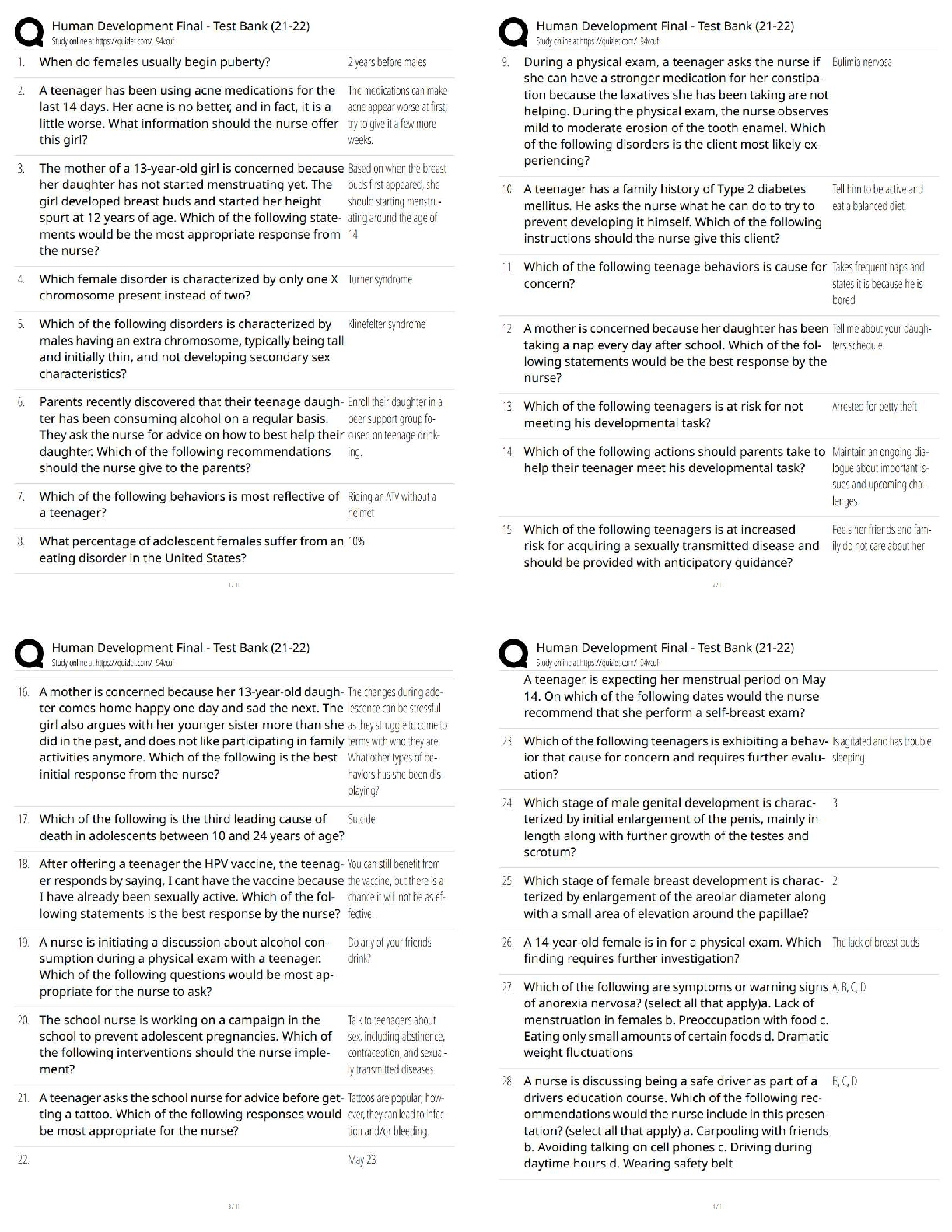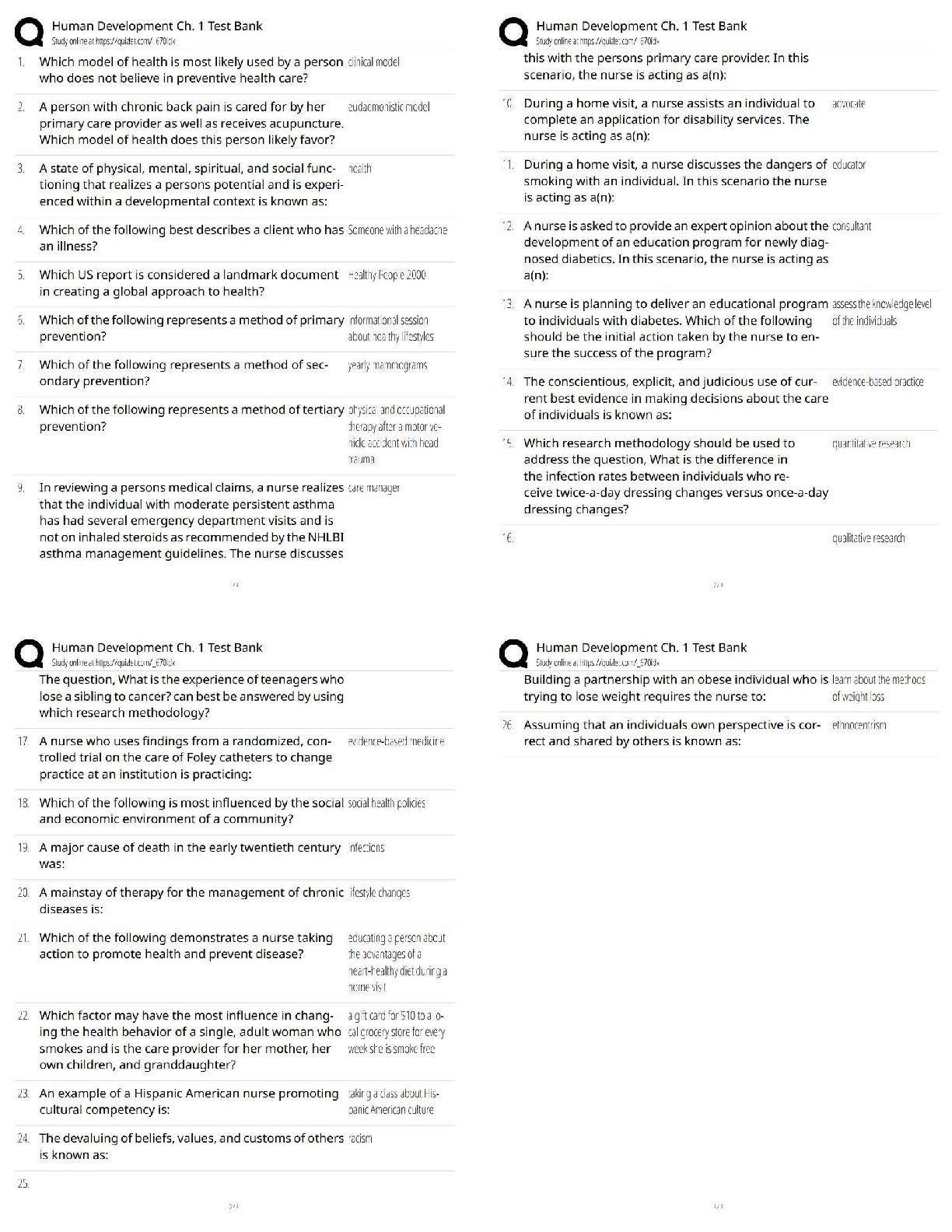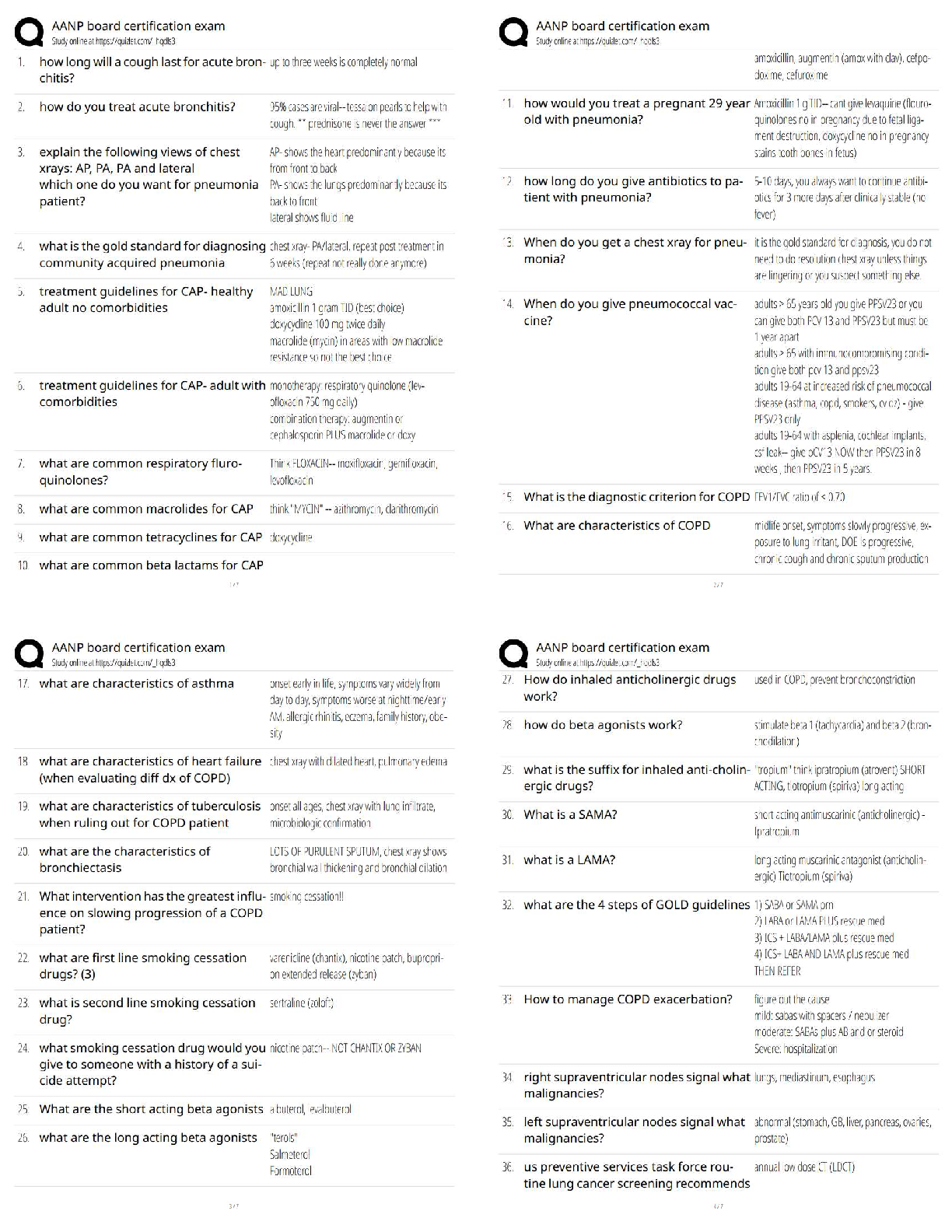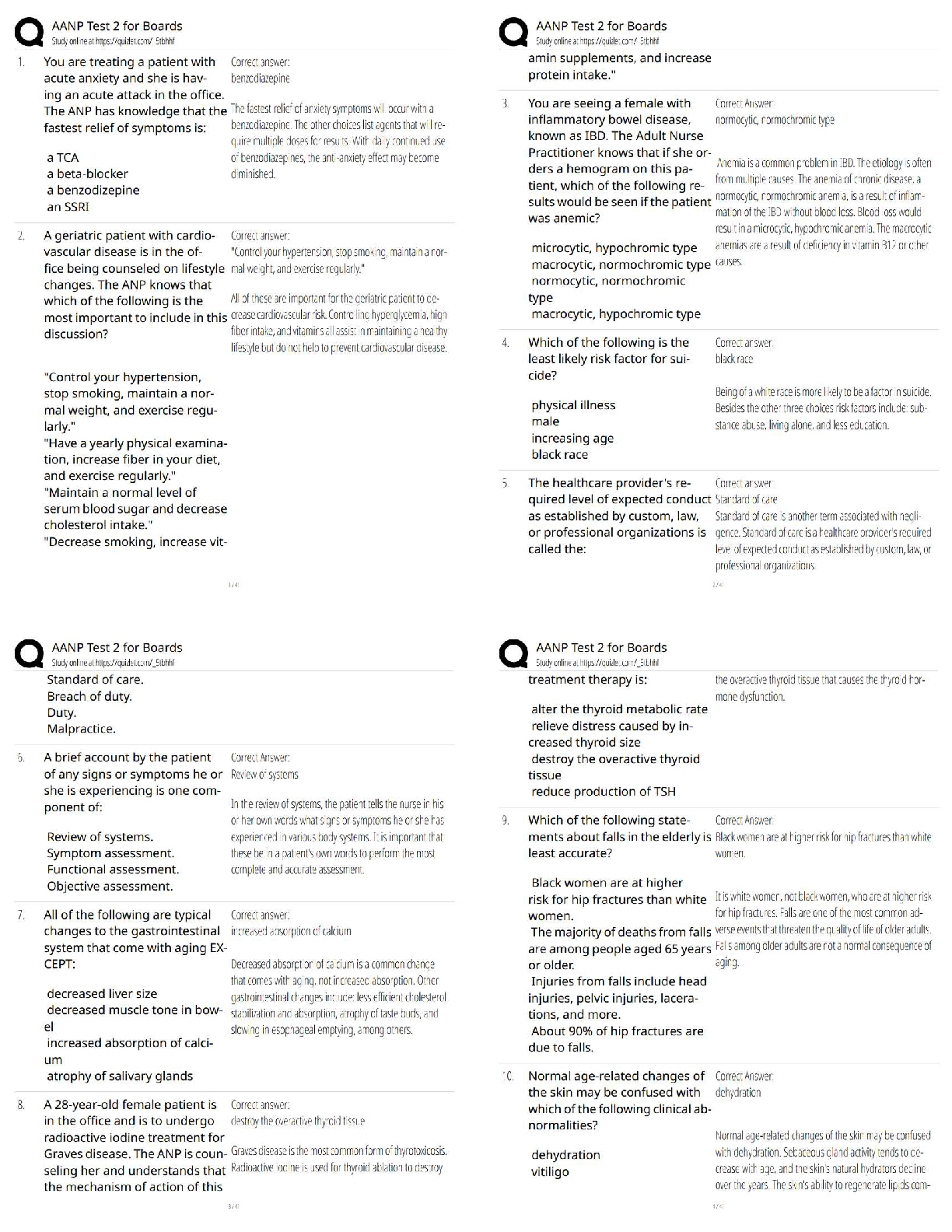SCIENCE 101 > QUESTIONS & ANSWERS > Southern New Hampshire UniversitySCI 200Applied Sciences Section 3 (All)
Southern New Hampshire UniversitySCI 200Applied Sciences Section 3
Document Content and Description Below
3 – Research and Presenting Science 1. What section is typically limited to about 250 words? a. The introduction b. The results c. The abstract d. The conclusion 2. In what section would you f ... ind details about how the research was done? a. The results b. The methods c. The conclusion d. The introduction 3. How can a paper within your field be of use to you research, even if it doesn’t directly provide useful information to you? a. Even if a paper is not useful for a specific research project, it may help point you in the direction of other, more relevant papers. 4. According to the introduction, what strained Flint’s ability to provide basic services? a. Changing the source of the water b. Neglect by the city of Flint government c. Declining industrial and residential tax bases d. Elevated lead levels in the water 5. According to the introduction, what population is considered to be disproportionately impacted by lead poisoning? a. According to the paper, lead poisoning disproportionately impacts lowincome and minority children. 6. What outstanding questions do you have after reading the introduction? Were there portions that were unclear or that you had trouble understanding? a. Various Answers 7. Did you find any methods or strategies helpful for understanding the introduction? a. Various Answers 8. According to Figure 1, which area examined in this study showed the largest difference before and after the change in Flint’s water source? a. High WLL Flint b. All Flint c. Outside Flint d. Lower WLL Flint 9. What was the only demographic characteristic that did not show a statistically significant difference between all of the areas examined? a. Race/ethnicity b. Socioeconomic status c. Sex d. Age 10. In how many areas in Figure 2 did at least 20 percent of the water samples contain 15 parts per billion of lead or higher? a. Seven b. Five c. Six d. Four 11. What potential sources of lead did the researchers account for when determining whether all of the elevated lead levels were due to the change in water source? a. Demolition projects and manufacturing locations that used lead were both ruled out as sources of the elevated lead levels in the Flint water. 12. Why would low rates of breastfeeding in the overserved areas increase the amount of elevated blood levels in children? a. Children that are not breast fed are more likely to consume formula made with Flint water containing elevated levels of lead. 13. According to the conclusion, which of the following statements is TRUE about lead exposure over the last 30 years? a. It has increased b. It is unknown c. It has decreased d. It has remained constant 14. Why might the data used in this study be skewed toward higher-risk children? a. Higher-risk children are more likely to be screened for elevated blood lead levels. 15. According to the video, which of the following tools appears on the Shapiro Library’s home page and allows you to search multiple databases to locate many types of sources such as books, e-books, video, and articles in peer-reviewed publications? a. Periodical Finder b. Research Guides c. A-Z Database List d. SUMMN Multi-Search 16. How can you find contact information for the Shapiro Library’s reference desk if you need help with your research? a. From anywhere on the Shapiro Library website, you can click on the FAQs in the top menu bar and use the Contact Us information on the left side of the page. 17. According to the blog post, what type of sources should you use in a research paper? a. Online sources b. Primary sources c. Published sources d. Secondary sources 18. Which of the following is an example of a primary source? a. A university website listing summaries of recent environmental science research b. A chapter from this webtext c. A Wikipedia entry about the topic of organic chemistry d. A Nature article in which the authors detail the results of their 2014 study 19. For which of the following topics would it be the MOST important to ensure that a source’s information is current? a. The benefits and shortcomings of Rutherford’s early physics experiments b. Predicting the movement of large objects c. The shifting trends in drug approval during the last century d. The success rates of new chemotherapy drugs 20. Which of the following questions is appropriate for determining the credibility of a source? a. Does the title of this source sound like it make addresses my topic or subject? b. Where will this source fir into my overall organization structure? c. Who is responsible for the content on this page and what is their background? d. Is this appropriate for the knowledge level of concerns of my audience? 21. When should you evaluate the relevance of source? a. Before you seek out publication b. After finding at least two other sources that corroborate it c. When you first discover it d. When you’re creating your reference list 22. Which of the following pieces of advice should you head when examining your sources for relevance? a. Gather as many different sources as possible before checking them for relevance b. Make sure you keep your purpose, audience, and other sources in mind c. It’s fine to use a relevant source, even if it isn’t very credible. d. It bulletproofs your argument to use multiple sources that contain nearly identical information 23. Is the source in the link above a relevant and credible academic resource to the example topic of fracking? -Baseline Groundwater Quality a. It is relevant to the topic, but it not credible because it lacks footnotes. b. It is not relevant to the topic, nor does it have enough citations to be considered credible c. It is relevant and credible; it uses outside sources, and comes from a reliable source d. There is not enough information in this source to determine whether it is credible 24. Is the source in the link above a relevant and credible academic resource to the example topic of fracking? -What is fracking and why is it controversial? a. It is relevant, but it is not a credible academic resource because it does not provide citations b. It is relevant and credible because it is current and includes helpful resources c. It is not relevant to the topic, and it has too many picture to be fully credible d. There is not enough information in this source to determine whether it is credible 25. Is the source in the link above a relevant and credible academic resource to the example topic of fracking? -Understanding Crude Oil Prices a. There is not enough information in this source to determine whether it is credible b. It is scholarly and credible but is not relevant to the topic of fracking. c. It is relevant, but is not credible because the research was done by a single person d. It is relevant and credible because it addresses the topic and comes from a reputable source 26. Which of the following examples shows how two authors should be listed in APA style? a. Betz, David. J. and Tim Stevens b. Betz, D. J. and Stevens, T. c. Betz, D. J., & Stevens, T. d. Betz, David. J. & Tim Stevens 27. How does this reference for a journal article need to change to properly formatted according to APA style? Sloto, Ronald A. (2014). Baseline groundwater quality from 34 wells in Wayne County, Pennsylvania, 2011 and 2013. Open-File Report. doi:10.3133/ofr20141116 a. The author’s first name should be listed as an initial rather that spelled out. 28. According to the basic rules for APA reference lists, which of the following shows the correct way to format a book title? a. The boom: How fracking ignited the American energy revolution and changed the world 29. Which of the following examples shows proper formatting of a book in an APA reference list? a. Ezra Levant. (2014). Groundswell: The case for fracking. London: Penguin. b. Levant, E. (2014). Groundswell: The case for fracking. London: Penguin. c. Levant, E. (2014). Groundswell: The Case for Fracking. London Penguin. d. Levant, E. (2014). Groundswell: The case for fracking. Penguin: London 30. Which is the appropriate way to cite an indirect source, such as a piece of empirical evidence that is already cited in the introduction of a paper you found? a. The secondary source should be cited in the parentheses, and the original source should be cited in the references list and signal phrase. b. The original source should be cited in the parentheses, and the secondary source should be cited in the references list and signal phrase. c. The secondary source should be cited in both the parentheses and in the references list, and the original source should be included in a signal phrase. 31. Which of the following BEST summarizes the difference between a reference for a print source and one for an electronic source? a. A DOI or URL should be listed for an electronic source. 32. Which of the following shows a properly formatted reference for an online scholarly journal article? a. Lutz, B. D., Lewis, A. N., & Doyle, M. W. (2013). Generation, transport, and disposal of wastewater associated with Marcellus Shale gas development. Water Resources Research, 49(2), 647-656. doi:10.1002/wrcr.20096 33. What is the best way to avoid committing unintentional plagiarism? a. Know how and when to cite evidence. 34. What is the difference between unintentional and intentional plagiarism? a. While unintentional plagiarism occurs when writers don’t know how or when to cite the evidence they’ve collected, intentional plagiarism occurs when a writer knowingly submits another person’s work as his or her own. [Show More]
Last updated: 3 years ago
Preview 1 out of 4 pages
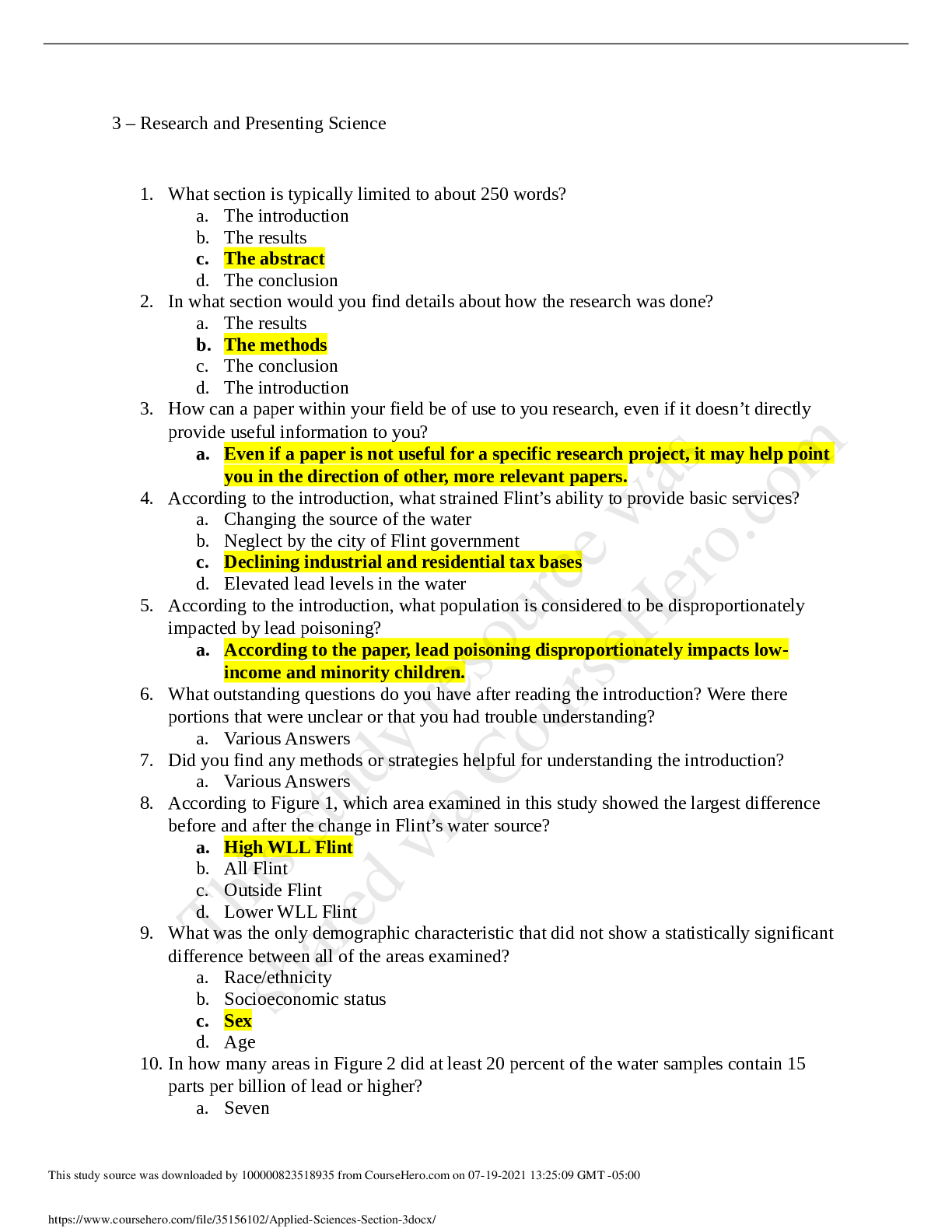
Buy this document to get the full access instantly
Instant Download Access after purchase
Buy NowInstant download
We Accept:

Reviews( 0 )
$8.00
Can't find what you want? Try our AI powered Search
Document information
Connected school, study & course
About the document
Uploaded On
Jul 19, 2021
Number of pages
4
Written in
All
Additional information
This document has been written for:
Uploaded
Jul 19, 2021
Downloads
0
Views
73



.png)
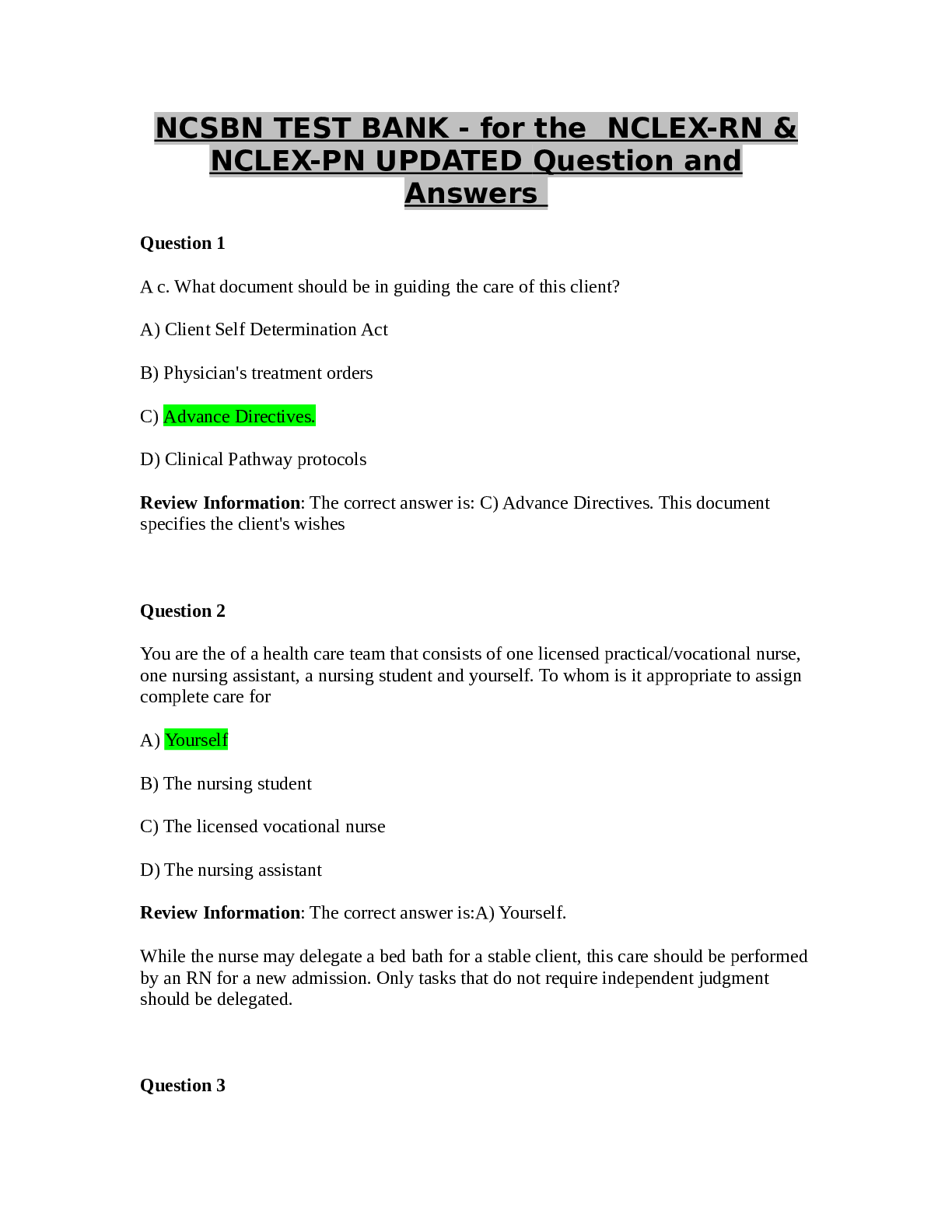
.png)
.png)
.png)


.png)



